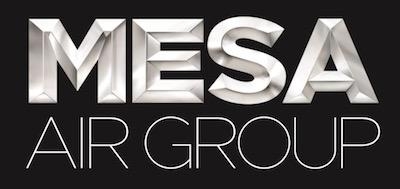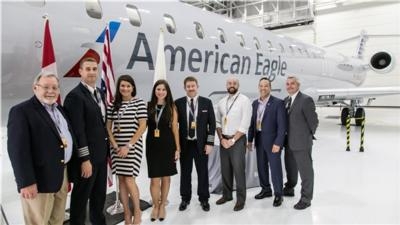Sun, Feb 20, 2022
For Once, Someone Names The Cause of Dwindling First Officer Numbers
Mesa Air Group CEO Jonathan Ornstein argued before lawmakers earlier this month that the knee-jerk imposition of the 1,500 flight hour requirement for airline pilots has put the country on the back foot compared to others, specifically laying out the tremendous difference in experience demanded of pilots overseas.

“It seems crazy that a 300-hour FO can land a Lufthansa A350 into JFK flying over Queens, and a U.S. pilot can’t do the same thing,” Ornstein said, naming the minimum time European pilots need to fly for carriers. “No other country in the world has adopted this, not a single one.”
The 1,500-hour requirement was a knee-jerk addition to the industry following the 2009 Colgan Air 3407 crash. At the time, the highly unflattering cockpit recordings pointed to a number of problems in the regional commuter industry, from a lack of sick time, use of OTC medication, exhaustion, and most of all - inadequate stall training. The Bombardier Q400 entered a stall while on approach into Buffalo, New York when flying through snow and fog. The primary cause of the crash stemmed from the crew overriding the stick pusher and continuing to pull aft on the control column, worsening the condition and causing a snap roll into the ground. Among the reforms pushed following the accident was the revision to change the requirement for ATP certificate qualifications up to 1,500 hours of flight time, a rule which wouldn't have altered the experience levels for the crash, as the first officer had already logged more than 2,200 hours. Similar rules were never put into effect anywhere else in the
world.

Ornstein called attention to the harm the rule has done to the industry. In 2009, less than a decade since the post-9/11 industry slump, pilots were a little more plentiful. A plethora of post-military aviators and civilian pilots had filled seats to the point that any pilot shortage seemed hypothetical. Now, faced with a massive bolus of retiring captains even with full new-hire classes, airline management is feeling angsty. Ornstein said Mesa faces a cut of 5% to 10% in flights next year due to a variety of reasons that pull pilots off the line, from illness to The continuing pandemic hasn't helped things either, as he mentioned increased rates of absence throughout the fleet sometimes as high as 24%. Having their captains poached for larger legacy carriers, sometimes even their first officers has made things even tougher to fill pilot seats despite high passenger demand. Things aren't all bad, however. Mesa is hiring additional instructors and booking extra sim time to bring new hires up to speed
as quickly as possible, hopefully allowing the company to alleviate the worst of the squeeze by this time next year.
More News
Also: Outlaw Prop 4 Mooney, Ready 4 Duty, Ukrainian F-16 Pilot Lost, Blue Origin Flt On his journey to become the first pilot to land solo on all seven continents, 19-year-old Etha>[...]
Also: DarkAero Update, Electric Aircraft Symposium, Updated Instructor Guide, OSH Homebuilts Celebrate The long-awaited Sonex High Wing prototype has flown... the Sonex gang tells >[...]
Discrete Code As used in the Air Traffic Control Radar Beacon System (ATCRBS), any one of the 4096 selectable Mode 3/A aircraft transponder codes except those ending in zero zero; >[...]
From 2023 (YouTube Edition): Deviation from the Historical Mean Racine, Wisconsin-based DeltaHawk is a privately-held manufacturer of reciprocating engines for aircraft and hybrid >[...]
Aero Linx: Formation and Safety Team (F.A.S.T.), USA The Formation and Safety Team (FAST) is a worldwide, educational organization dedicated to teaching safe formation flying in Wa>[...]
 Airborne 07.02.25: TikToker Arrested, Vietnam A/L Ground Hit, ATC Modernization
Airborne 07.02.25: TikToker Arrested, Vietnam A/L Ground Hit, ATC Modernization Airborne Affordable Flyers 07.03.25: Sonex HW, BlackShape Gabriel, PRA Fly-In 25
Airborne Affordable Flyers 07.03.25: Sonex HW, BlackShape Gabriel, PRA Fly-In 25 ANN's Daily Aero-Term (07.07.25): Discrete Code
ANN's Daily Aero-Term (07.07.25): Discrete Code Classic Aero-TV: DeltaHawk Aero Engine Defies Convention
Classic Aero-TV: DeltaHawk Aero Engine Defies Convention ANN's Daily Aero-Linx (07.07.25)
ANN's Daily Aero-Linx (07.07.25)




